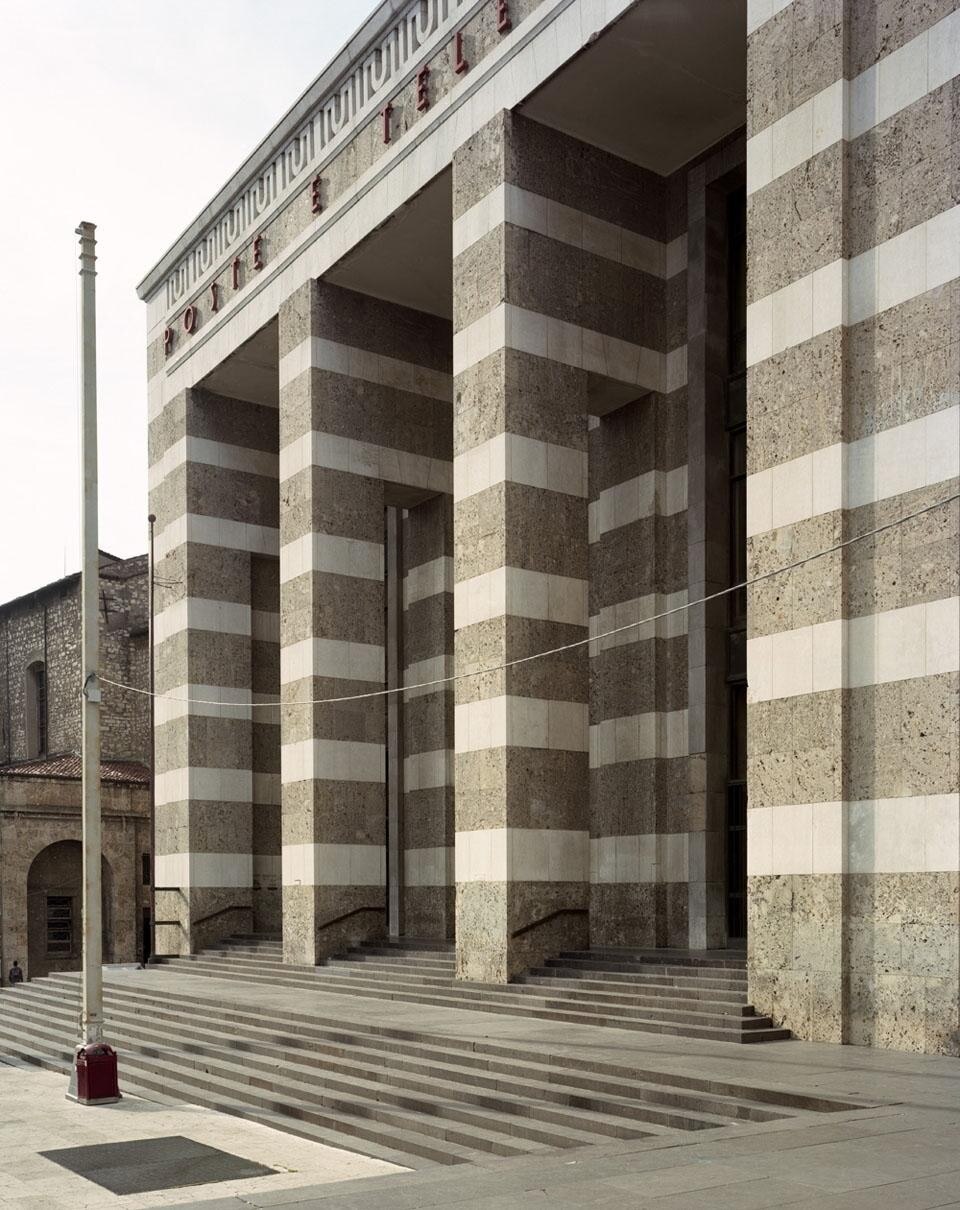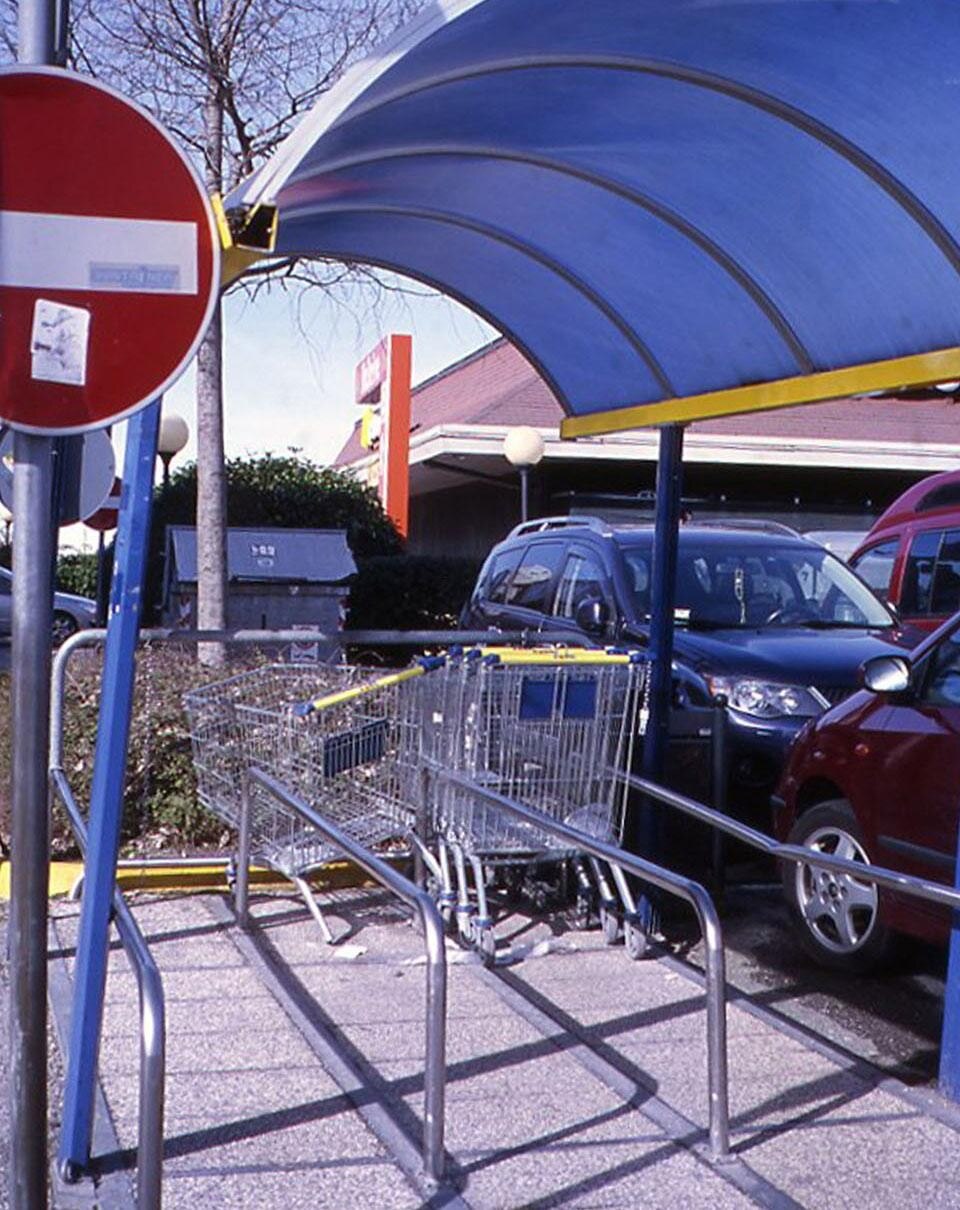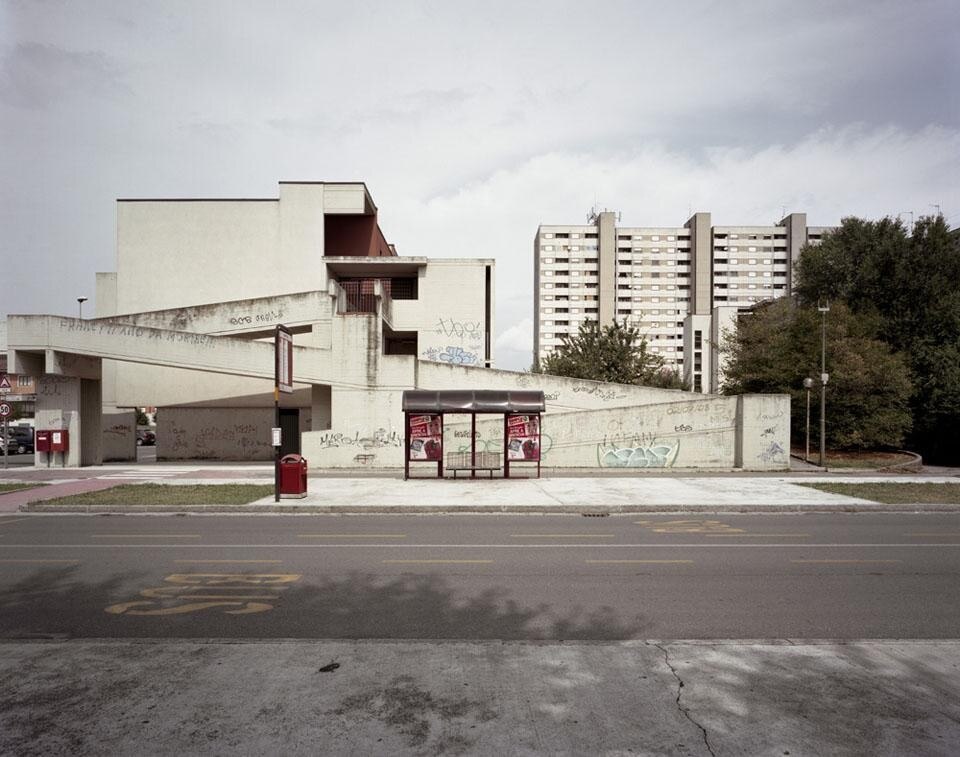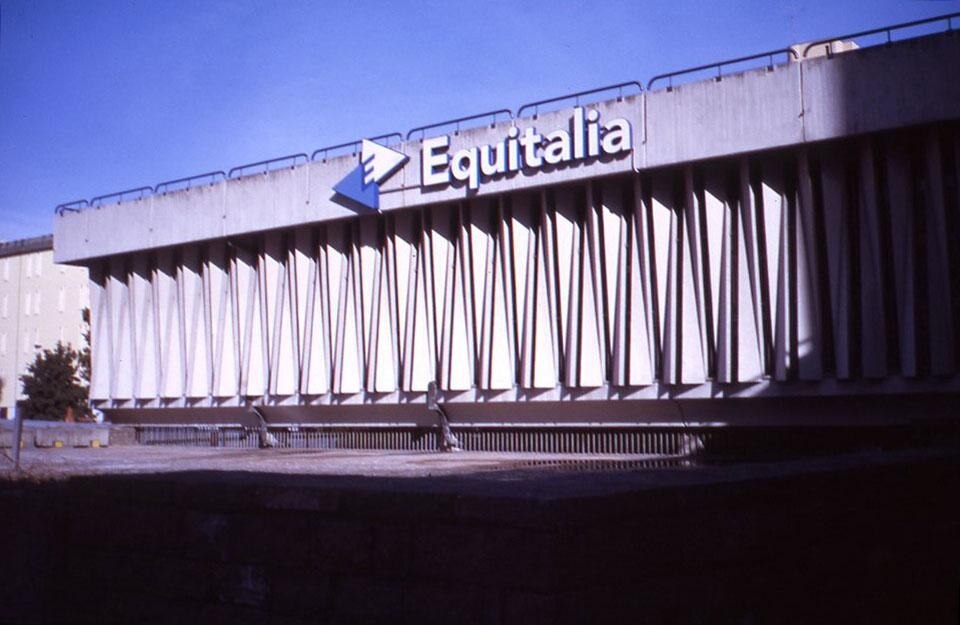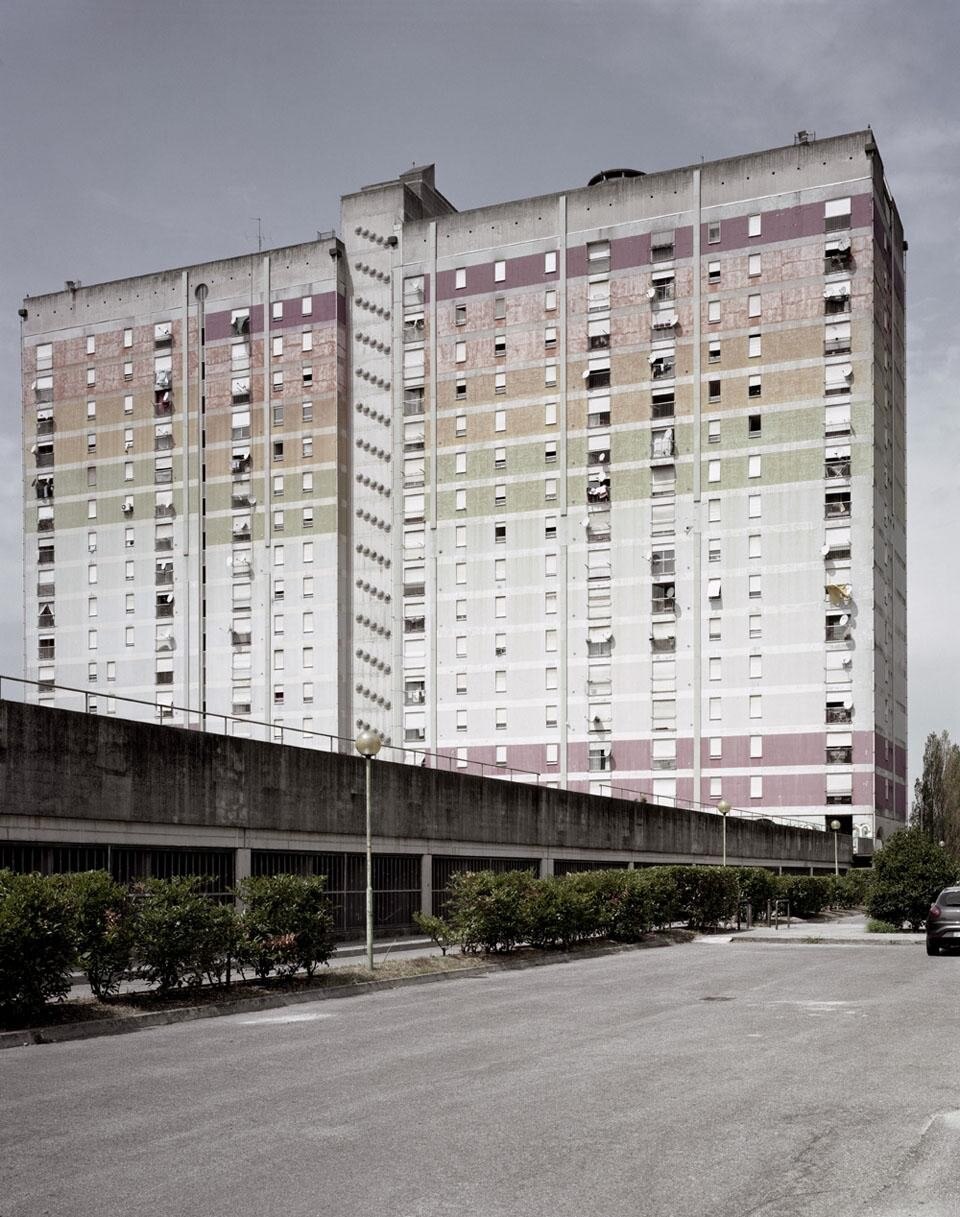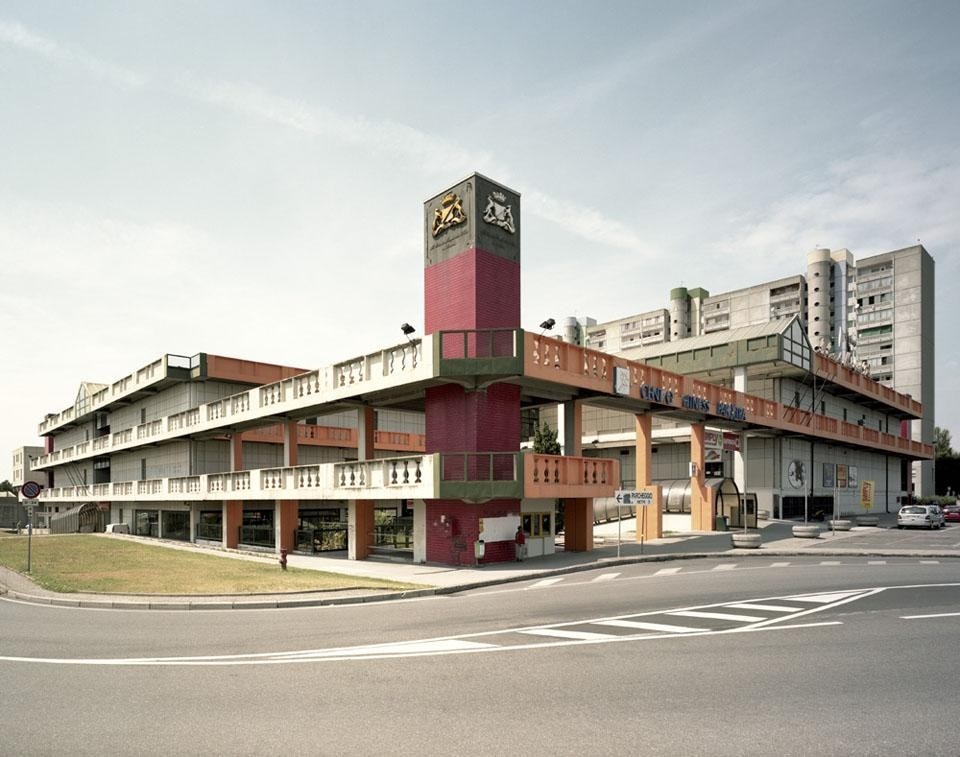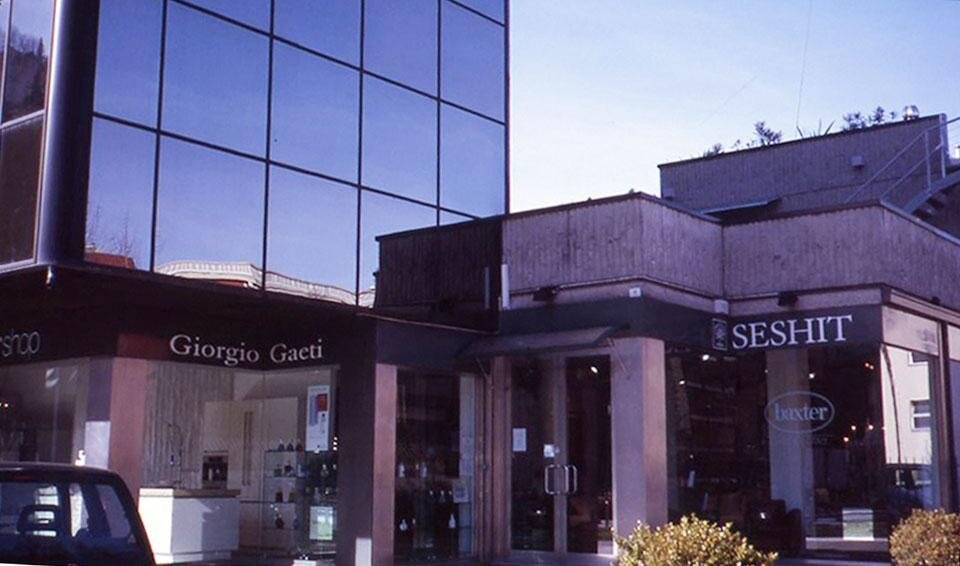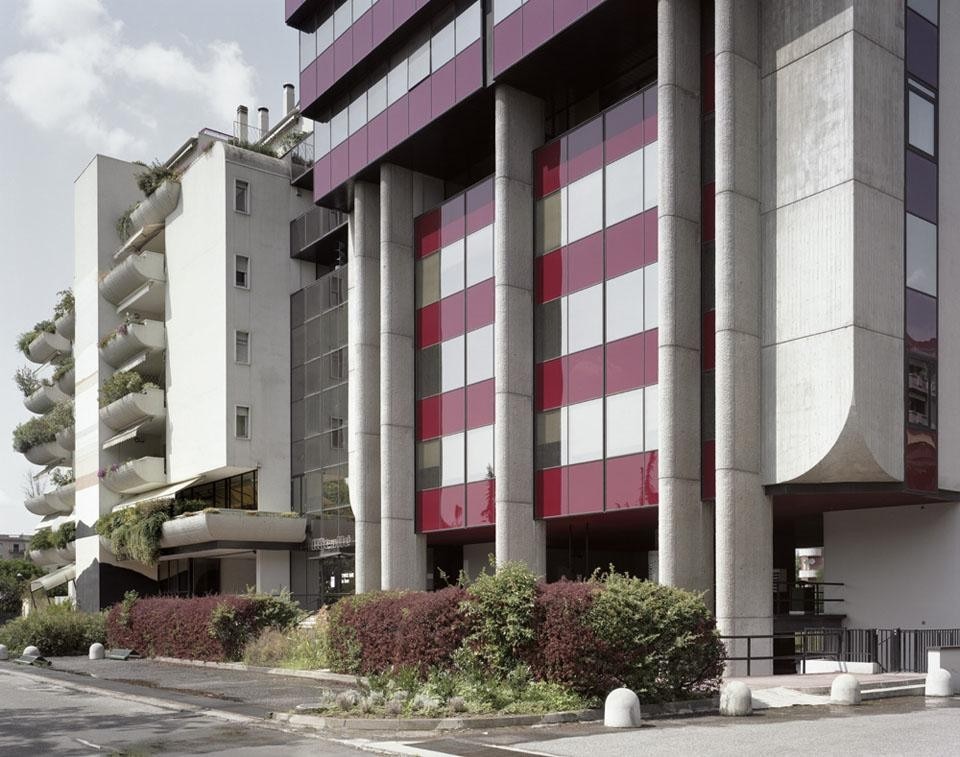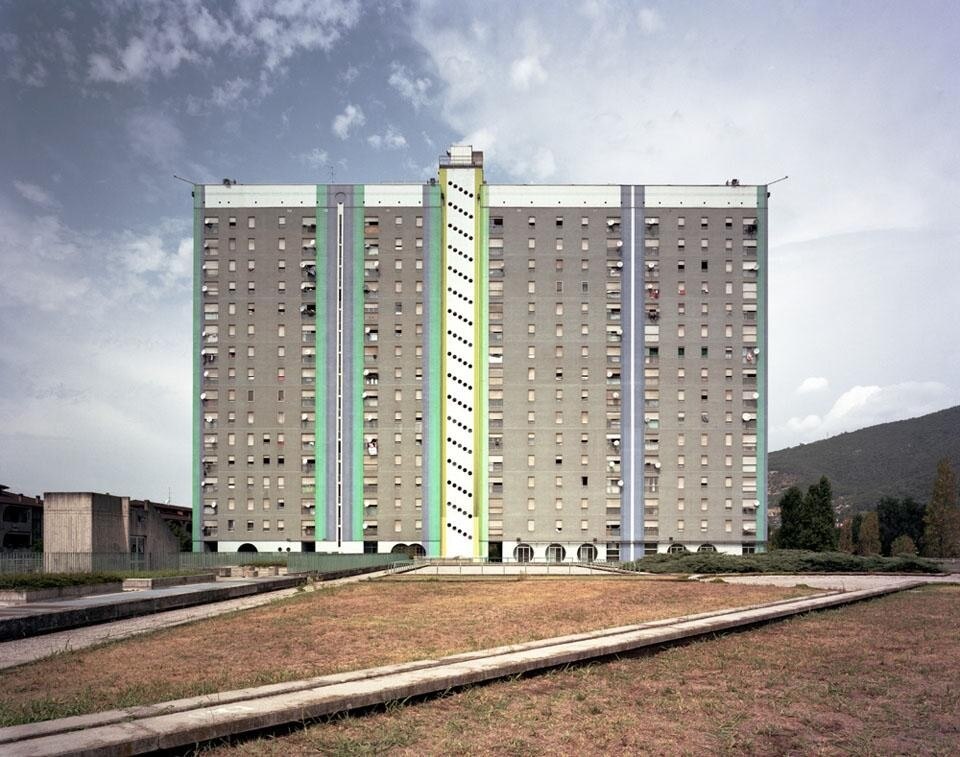Basilico is the top Italian photographer of towns, architecture and factory buildings. Dan knew his work, but not the man. They met in Brescia and held productive sessions that enabled them to exchange different points of view. They each took pictures using their own equipment and their own methods. Basilico with his long-vista shots of August bank holiday: few people around, the town virtually empty, large buildings, suburbs, vast views, tall office blocks and supermarkets. Dan Graham, on the other hand, works like an American tourist from the Bronx: automatic camera, spontaneous shots of shop windows and from inside McDonald's.
I asked Dan where he got this outlook from, and he said: "The focal point of my pictures of the suburban outskirts of post-war Brescia was undoubtedly influenced by my childhood experience in the suburbs of New York. The landscape of my childhood was shopping centres, the first McDonald's, a few production units and sheds that acted as offices. They were all located in the newly expanding peripheral suburbs, then still with very few highways. I photographed the homes of the working-class to lower middle-class families in both New Jersey and Brescia, whose façades are in imitation neoclassic style, with connotations of false luxury in their decorative detail."
It was basically an uneven match, a professional photographer against an amateur.
A European eye versus an American one.
An inhabitant of famous town centres and a street kid from the American suburbs.
Two opposing views, which strangely enough, found in Italy and in Brescia a recomposition not in the history of the old city but in its more recent emergence of suburban architecture, middle-class suburbs, non-places.
Images, often details, that stop daily life, not history.
Massimo Minini
The exhibition Dan Graham & Gabriele Basilico. Unidentified Modern City. Globalized Brescia, curated by Maurizio Bortolotti, begins at the Galleria Massimo Minini in Brescia on 2 April and runs until 21 May.
